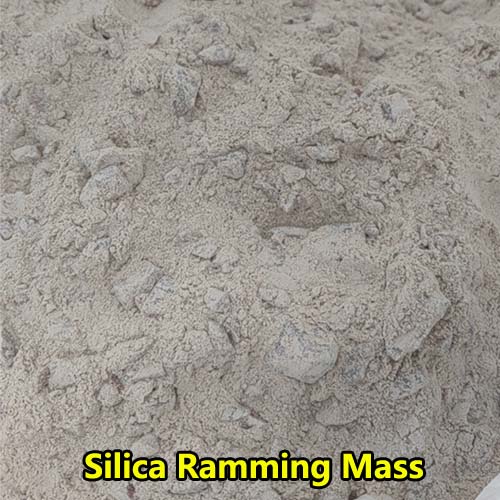In highly corrosive industries like chemical engineering, metallurgy, and environmental protection, acid-resistant refractory castables serve as key lining materials, their performance directly impacting equipment life and production safety. This article, grounded in materials science principles and integrated with engineering practice, systematically explains the configuration techniques for acid-resistant refractory castables, providing practitioners with both professional and practical technical guidance.
Material system construction: the philosophy of balancing acid resistance and fire resistance
The core challenge of acid-resistant refractory castables lies in simultaneously resisting acidic media corrosion and high-temperature damage. The material system must meet three basic requirements:
Main component selection: A SiO₂-Al₂O₃ system serves as the backbone, with silica fume (SiO₂ content ≥92%) providing a dense network structure and alumina clinker (Al₂O₃ content 75%-85%) enhancing high-temperature stability.
Acid-resistant additives: Phosphates (such as Al(H₂PO₄)₃) or silica sol (SiO₂·nH₂O) are introduced as binders to form a dense Si-O-P or Si-O-Si protective film on the material surface, blocking H₁ permeation pathways.
Aggregate gradation optimization: A “three-grade proportioning method” is adopted, i.e., coarse aggregate (5-3mm) accounts for 40%-50%, medium aggregate (3-1mm) accounts for 30%-35%, and fine powder (≤0.088mm) accounts for 15%-20%. The D50 value is verified by a laser particle size analyzer to be in the range of 8-12μm, ensuring that the bulk density is ≥2.65g/cm³.
Formulation design: technology transfer from laboratory to industrialization
Typical formulation design follows the “3+2+1” principle:
3 Basic Raw Materials: Refractory Aggregate (60-70%), Refractory Powder (15-20%), and Binder (8-12%).
2 Functional Additives: Plasticizers (such as methylcellulose, 0.2-0.5%) to improve workability, and Anti-Explosion Agents (such as organic fiber, 0.1-0.3%) to control baking cracking.
1 Acid-Resistant Component: Selected based on the media characteristics. For example, in sulfuric acid environments, the ZrO₂ content should be increased to 8%-10%, while in hydrochloric acid environments, SiC (6%-8%) is preferred.
Preparation process: full process control from mixing to curing
Premixing: Use a forced mixer to dry-mix the aggregate and powder for 3-5 minutes to ensure uniform distribution of SiO₂ and Al₂O₃.
Binder Addition: Add the aluminum phosphate solution in three separate additions, with a one-minute interval between each addition to prevent localized gelation.
Vacuum Treatment: Degas under a -0.095 MPa vacuum for 5 minutes to eliminate microscopic air voids.
Molding Process: Vibration casting is recommended, with a vibration frequency of 2800-3200 vibrations/minute, and the duration is based on surface slurry.
Curing System: A three-stage curing method is used: moisturizing curing at 25°C for 24 hours, drying at 110°C for 12 hours, and heat treatment at 600°C for 4 hours to ensure complete conversion of the phosphate binding phase.
Performance Optimization: From Laboratory Testing to Field Validation
Key Performance Indicators:
Acid Resistance (GB/T 17601-2008): ≥98.5%
Apparent Porosity: ≤18%
Flexural Strength (110°C Oven-dried): ≥8 MPa
Strength Retention after 1000°C × 3h Heat Treatment: ≥85%
Failure Mode Prevention and Control:
Corrosion Cracking: The addition of TiO₂ (2-3%) forms a Ti-Si-O protective layer, inhibiting H+ penetration.
Structural Spalling: Fiber reinforcement technology is used to create a three-dimensional network structure within the matrix, enhancing fracture energy.
Technology Development Trends
Nano-modification technology: Nano-SiO₂ (particle size 20-50nm) is introduced through a sol-gel method, increasing room-temperature strength by 40% and oven-dried strength exceeding 12 MPa at 110°C.
Bake-free technology: A calcium aluminate cement-phosphate composite system has been developed, achieving a demolding strength of ≥5 MPa after 24 hours of natural curing, shortening the construction cycle by 60%.
3D printing compatibility: Optimizing particle size distribution and rheological properties ensures that the castable meets printing requirements of extrusion pressure ≤0.3 MPa and open time ≥60 minutes.
The formulation of acid-resistant and refractory castables represents a deep fusion of materials science and engineering practice. Through precise material selection, scientific formulation design, and rigorous process control, high-performance products can be produced to meet the demands of complex working conditions. With the integration of cutting-edge technologies such as nanotechnology and 3D printing, this field is rapidly evolving towards intelligent and functional development, providing a more reliable protective barrier for industrial equipment.

